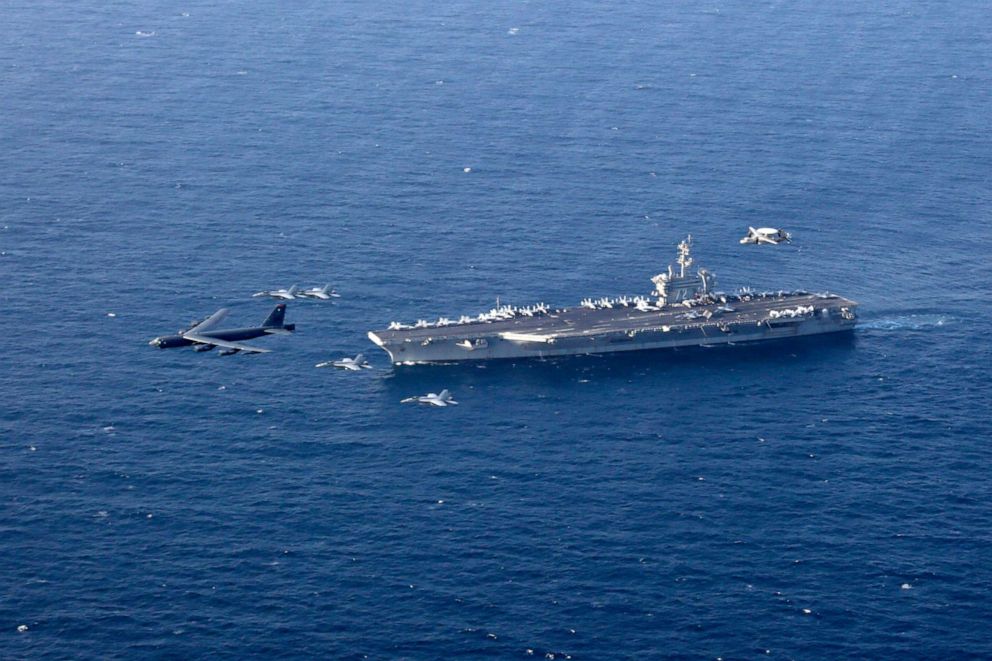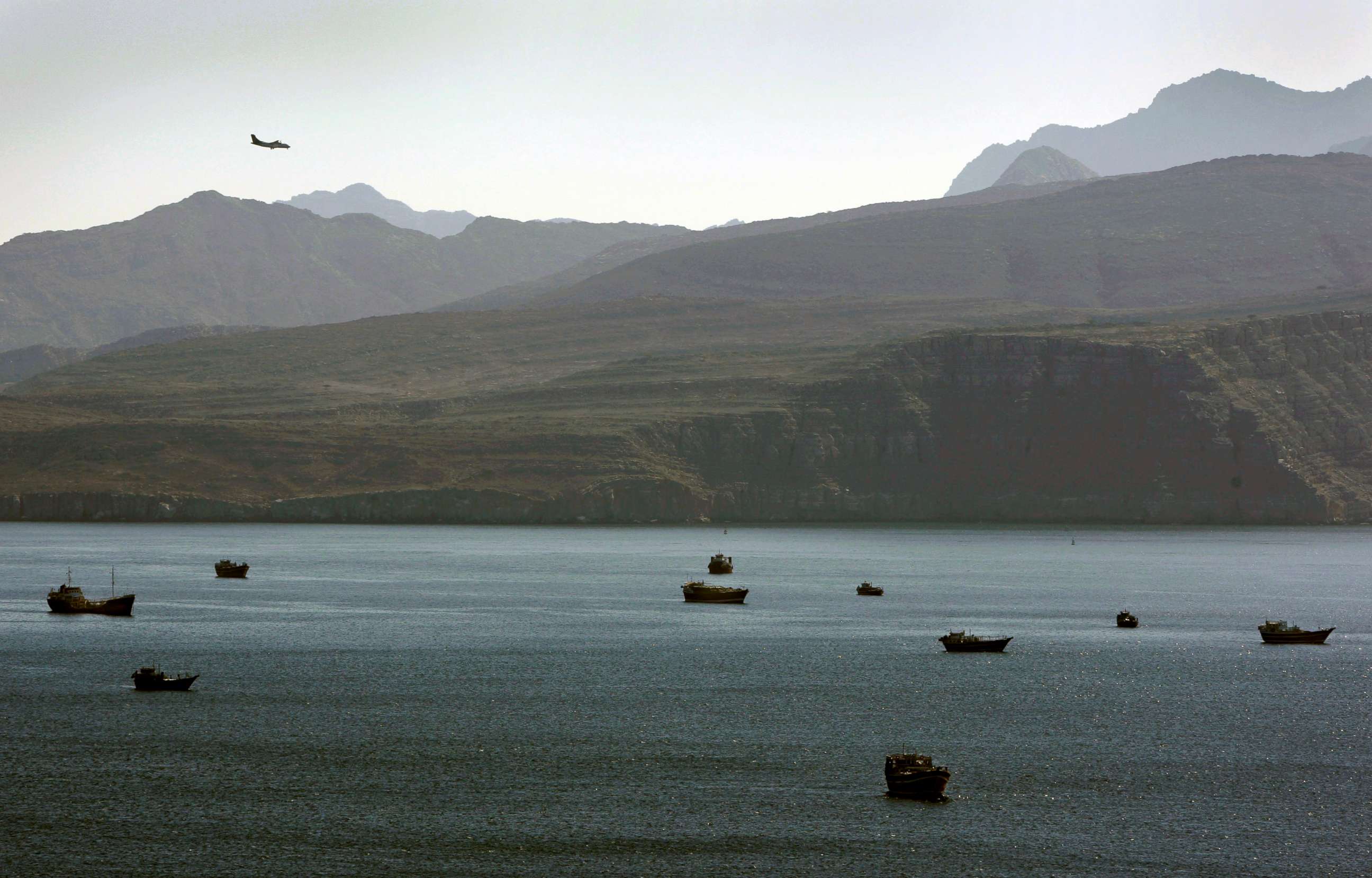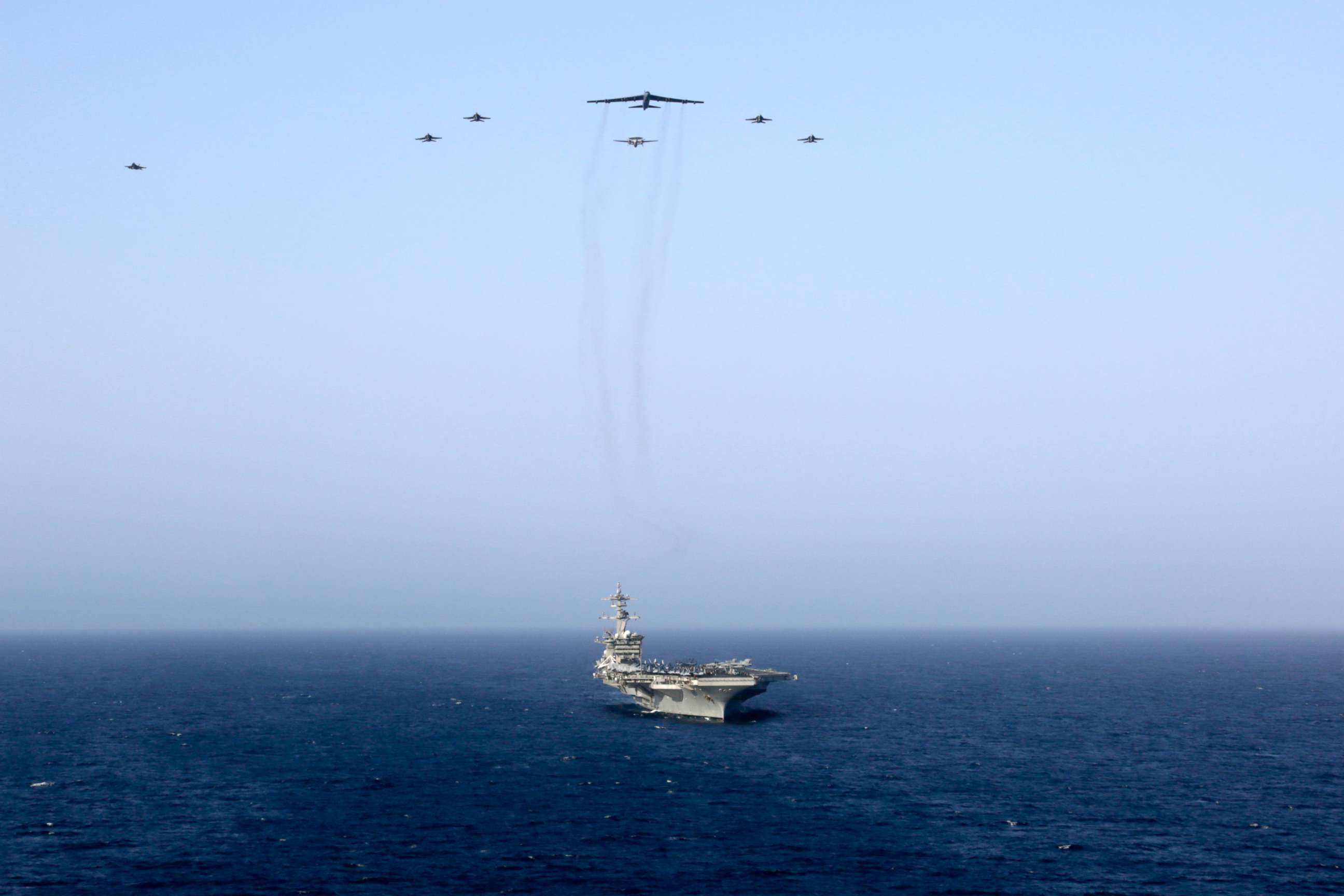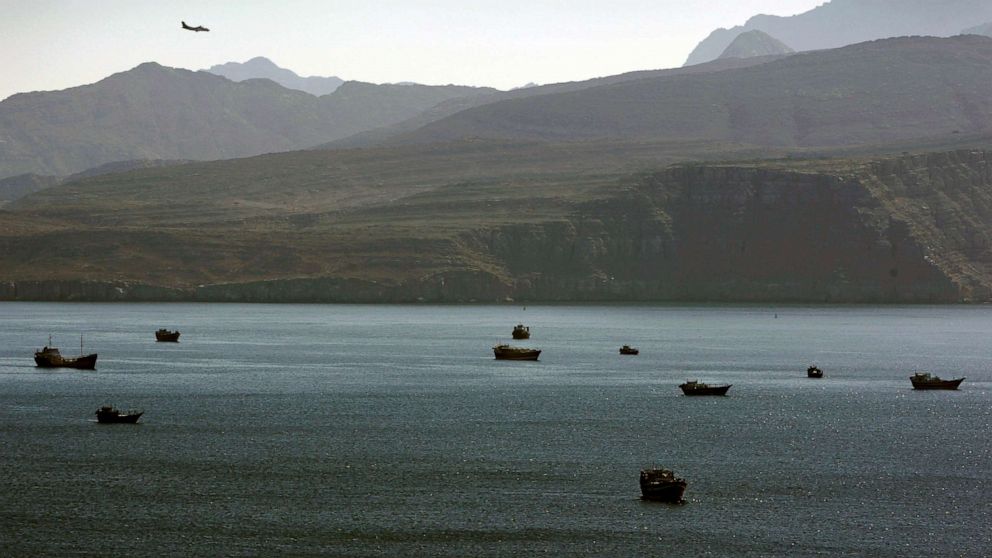US refutes Iranian claim, says missiles put on small boats were for covert attacks
Following claims by Iran about why it deployed missiles in early May that led the U.S. to deploy an aircraft carrier strike group and B-52 bombers to the region, a U.S. defense official has provided ABC News with new details about the intelligence that drove the Trump administration's strong response.

U.S. intelligence assessed that, despite Iran's contention the move was made for defensive purposes, there was no plausible reason to load the cruise missiles onto small civilian boats except to have them ready for offensive purposes, a U.S. defense official said Thursday.
The intelligence assessment is counter to the claim made to ABC News on Sunday by Iran's top diplomat about why the missiles had been put on small boats called dhows.
"We have a right to defend ourselves. So, if you put missiles on our boats, it is our right, we don't need to consider it," Javad Zarif, Iran's Foreign Minister, told ABC News' "This Week " anchor Martha Raddatz in an exclusive interview in Tehran this weekend.
"We have the right to put whatever missiles we want to put on them," he added.
"So, if they if they show that intelligence, that's only the obvious," he said when asked about the possibility that the U.S. might declassify satellite images showing the missiles placed on small civilian boats.
Zarif scoffed at claims that the missiles could be used for offensive purposes saying, "putting missiles on our boats is different from blowing up a ship."

But U.S. intelligence believes the cruise missiles were placed on the dhows -- small wooden merchant vessels found all over the Persian Gulf region -- to give Iran a covert offensive capability, according to the defense official.
The intelligence about the cruise missiles along with the buildup of other Iranian forces along the Persian Gulf were key factors in the U.S. military's decision to deter a new Iranian threat to U.S. forces and interests in the Middle East, according to U.S. officials.
In early May, U.S. intelligence detected that cruise missiles were being loaded onto two civilian dhows in the port city of Jask, according to the U.S. defense official. Designed to travel long distances while flying at low altitudes, cruise missiles can strike at targets either on land or at sea.
The missiles were housed in box-type launchers placed on the dhows, an indication that the missiles were intended to be fired from the dhows, said the defense official.
U.S. intelligence tracked the two dhows as they sailed 200 miles eastward through Iranian territorial waters towards the port of Chabahar. Throughout that trip, the official said, the launchers had been covered to avoid their being detected.
Because of those factors, U.S. intelligence assessed that the placement of the missiles aboard civilian vessels meant they were intended for offensive purposes and immediate use.
A main reason the missiles had been loaded onto the dhows was so that the vessels could sail to a location without drawing attention, the official said. From there, the long-range missiles could be used to “attack something that was not expecting it," the official speculated.
The official said Zarif's claim that the missiles were for defensive purposes did not add up, noting that Iran already has 2,000 cruise and ballistic missiles along its coast for that purpose.

U.S. officials assessed that Iran may have intended the cruise missiles on the dhows to target commercial shipping. But the missiles were unloaded in Chabahar about 10 days after the U.S. announced that the aircraft carrier USS Abraham Lincoln and B-52 bombers had been dispatched to the region to deter the new Iranian security threat.
While there has been no direct attack on U.S. ships in the region since then, officials have pointed to the sabotage attack on four civilian vessels off the coast of the United Arab Emirates as indications of the continuing Iranian threat.
Senior U.S. officials have publicly blamed Iran for the placement of magnetic explosive charges on the hulls of the ships that left 5-10 foot gashes near the waterline of each ship.
The attack on the freighters occurred about a week after the U.S. first spotted the dhows, an indication that the missile-equipped dhows were only part of the new Iranian maritime threats detected by U.S. intelligence.




